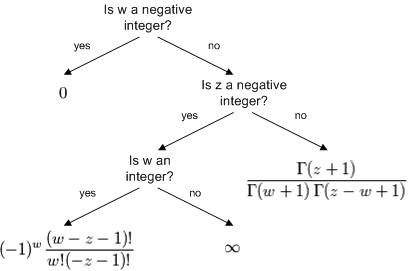The previous posts in this series have looked at P(X > Y), the probability that a sample from a random variable X is greater than a sample from an independent random variable Y. In applications, X and Y have different distributions but come from the same distribution family.
Sometimes applications require computing P(X > max(Y, Z)). For example, an adaptively randomized trial of three treatments may be designed to assign a treatment with probability equal to the probability that that treatment has the best response. In a trial with a binary outcome, the variables X, Y, and Z may be beta random variables representing the probability of response. In a trial with a time-to-event outcome, the variables might be gamma random variables representing survival time.
Sometimes we’re interested in the opposite inequality, P(X < min(Y,Z)). This would be the case if we thought in terms of failures rather than responses, or wanted to minimize the time to a desirable event rather than maximizing the time to an undesirable event.
The maximum and minimum inequalities are related by the following equation:
P(X < min(Y, Z)) = P(X > max(Y, Z)) + 1 − P(X > Y) − P(X > Z).
These inequalities are used for safety monitoring rules as well as to determine randomization probabilities. In a trial seeking to maximize responses, a treatment arm X might be dropped if P(X > max(Y,Z)) becomes too small.
In principle one could design an adaptively randomized trial with n treatment arms for any n ≥ 2 based on
P(X1 > max(X2, …, Xn)).
In practice, the most common value of n by far is 2. Sometimes n is 3. I’m not familiar with an adaptively randomized trial with more than three arms. I’ve heard of an adaptively randomized trial that was designed with five arms, but I don’t believe the trial ran.
Computing P(X1 > max(X2, …, Xn)) by numerical integration becomes more difficult as n increases. For large n, simulation may be more efficient than integration. Computing P(X1 > max(X2, …, Xn)) for gamma random variables with n=3 was unacceptably slow in a previous version of our adaptive randomization software. The search for a faster algorithm lead to this paper: Numerical Evaluation of Gamma Inequalities.
Previous posts on random inequalities:


